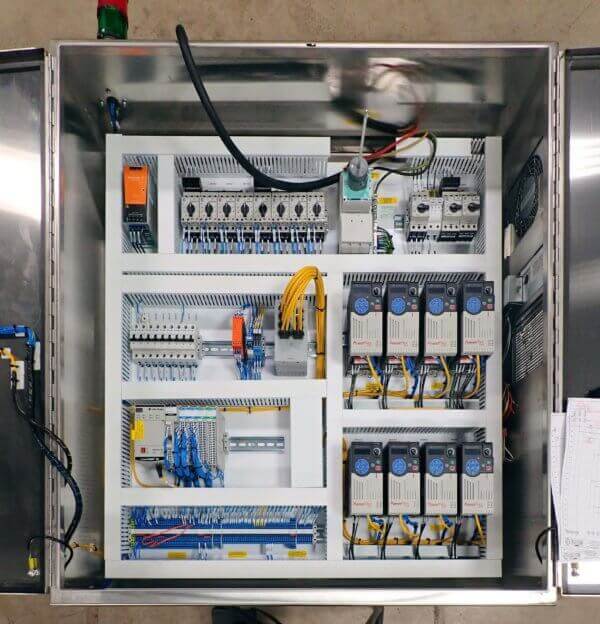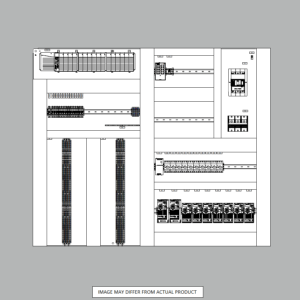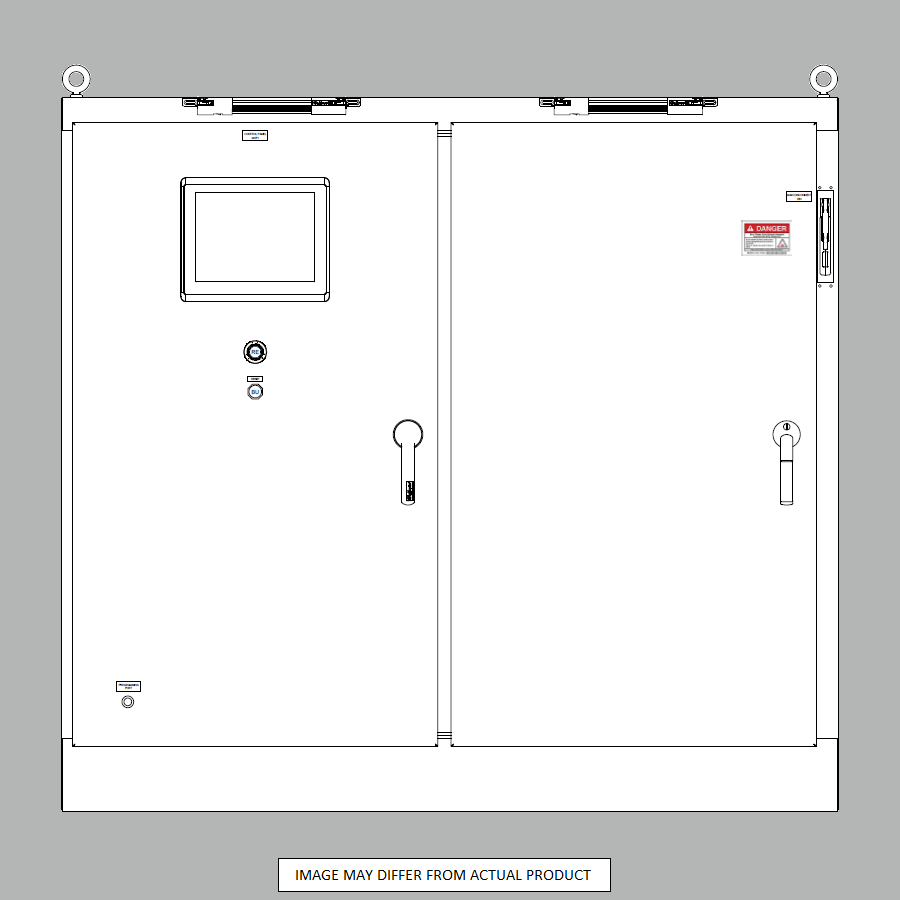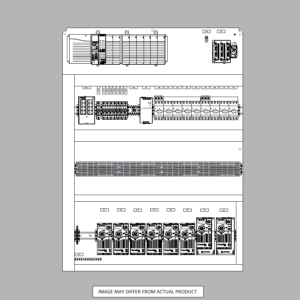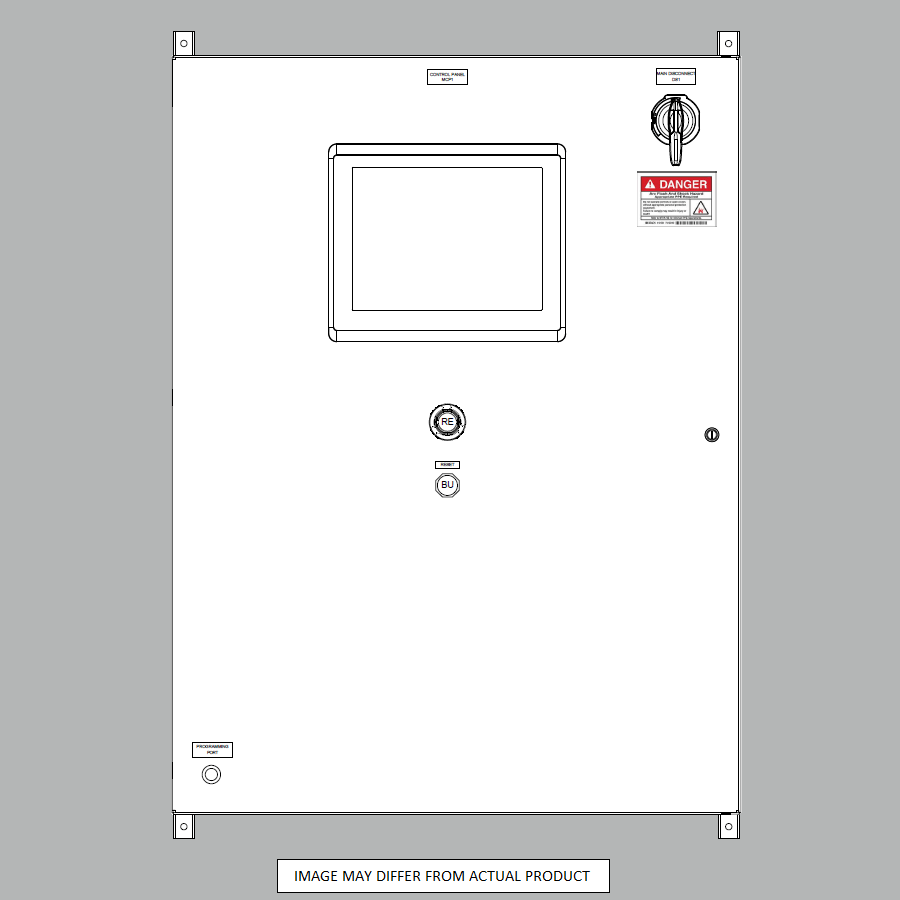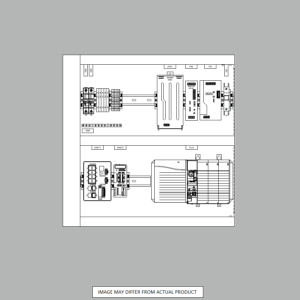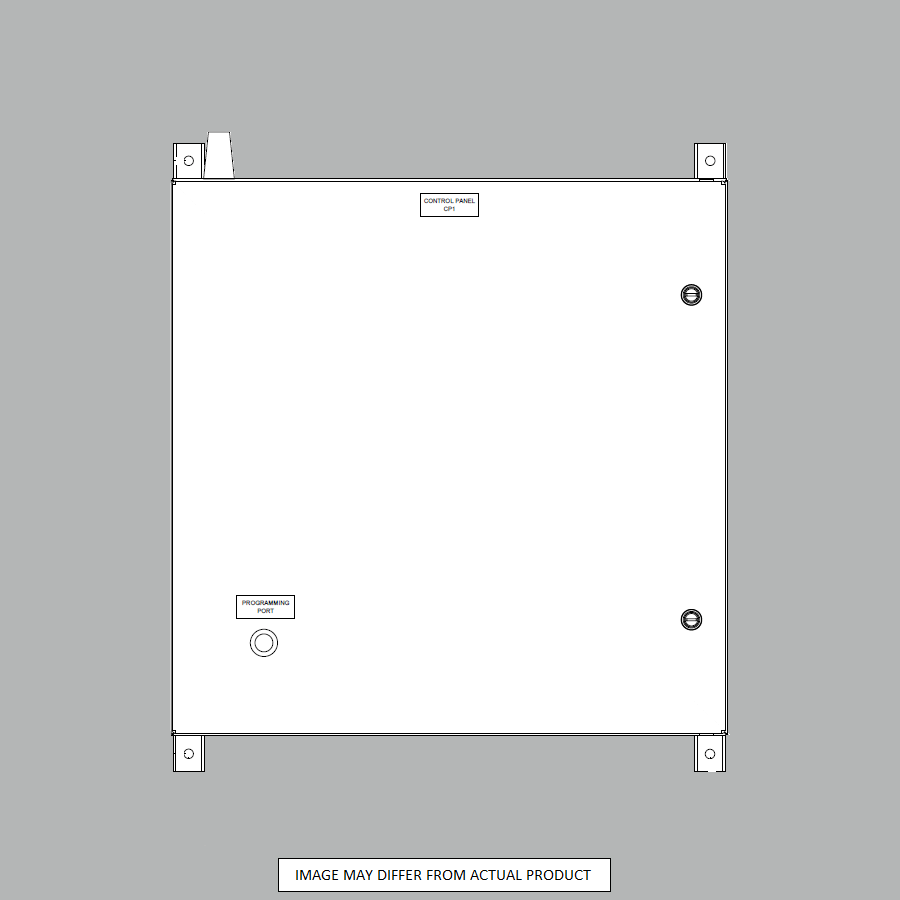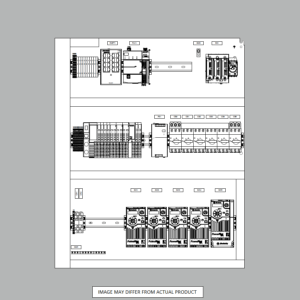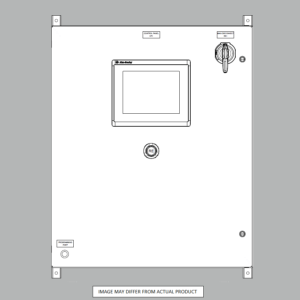What is the definition of a Programmable Logic Controller or “PLC”?
A Programmable Logic Controller, commonly known as PLC, is crucial in modern industrial automation systems. PLCs are digital computers designed specifically for use in industrial environments to control and monitor various machines and processes. These robust devices have revolutionized industries’ operations, providing efficient and reliable control solutions for multiple applications.
What exactly is a Programmable Logic Controller (PLC)?
A Programmable Logic Controller (PLC) is a specialized computer system used in industrial and manufacturing environments to automate and control various processes. It is designed to be highly reliable, capable of operating in harsh conditions, and able to process information in real-time. Unlike general-purpose computers, PLCs are built to handle multiple inputs and outputs, execute specific control instructions, and communicate with other devices in an industrial setting.
How does a PLC differ from other control systems?
PLCs differ from other control systems in several key aspects. Firstly, they are designed to be more rugged and resistant to environmental factors such as temperature, vibration, and electrical noise, making them ideal for industrial applications.
Secondly, PLCs offer greater flexibility in programming and can be easily reprogrammed to adapt to changes in the production process. Unlike traditional hardwired control systems, PLCs use software-based logic, allowing for easier modifications and updates to the control scheme.
What are the main components of a PLC?
The main components of a PLC include the CPU (Central Processing Unit), input and output modules, power supply, and memory.
CPU (Central Processing Unit)
The CPU is the brain of the PLC, executing the control program and managing overall operations. It performs several key functions:
- Program execution: The CPU reads and executes the user-written control program stored in memory, typically in a cyclic manner.
- Data processing: It performs arithmetic and logical operations on input data to determine the appropriate output actions.
- Memory management: The CPU manages both volatile (RAM) and non-volatile (ROM, EEPROM) memory, storing program instructions, data, and system configurations.
- Input/Output (I/O) handling: It scans input modules, processes the data, and updates output modules based on the program logic.
- Communication: The CPU manages communication with other devices, such as HMIs, SCADA systems, or other PLCs, using various protocols.
- Diagnostics and error handling: It monitors system health, detects faults, and initiates appropriate responses or alarms.
- Timing and synchronization: The CPU maintains system timing, manages interrupts, and controls time-dependent operations precisely.
- Data logging: It can record operational data, events, and alarms for later analysis or troubleshooting.
The CPU’s performance is determined by processing speed, memory capacity, and the number of I/O points it can handle. Modern PLCs often feature advanced CPUs with multi-tasking capabilities, allowing for more complex control strategies and faster response times.
Different PLC manufacturers offer CPU models with other features and capabilities to suit various industrial applications, from simple machine control to complex process automation systems.
Input Modules
Input modules receive information from various input devices, such as sensors, switches, and analog signals. These modules serve as the interface between the physical world and the control system, converting real-world data into a format that can be processed by the system’s central processing unit (CPU).
Different types of input modules are designed to handle specific types of signals:
- Digital input modules handle discrete on/off signals from devices like push buttons, limit switches, and proximity sensors.
- Analog input modules: These process continuous signals from devices such as temperature sensors, pressure transducers, and flow meters. They typically convert analog signals to digital values using analog-to-digital converters (ADCs).
- Thermocouple input modules: These modules, specifically designed to work with thermocouples for temperature measurement, include cold junction compensation and linearization features.
- RTD (Resistance Temperature Detector) input modules: These are used for precise temperature measurements using RTD sensors.
- Counter input modules: Designed to count pulses from devices like encoders or flow meters, these modules can measure frequency, position, or accumulated counts.
Input modules often include features such as:
- Signal conditioning to filter noise and protect against voltage spikes
- Galvanic isolation to prevent ground loops and protect the control system from electrical disturbances
- Diagnostic capabilities to detect sensor failures or wiring issues
- Configurable parameters such as input range, sampling rate, and filtering options
The data collected by input modules is then made available to the control system’s program, which can be used for monitoring, control decisions, and data logging. This information forms the basis for the system’s ability to respond to changes in the physical environment and execute programmed control strategies.
Output Modules
Output modules send control signals to actuators, motors, and other output devices. These signals are typically in the form of electrical voltages or currents that can be used to control various mechanical, hydraulic, or pneumatic systems. Common types of output modules include:
- Digital output modules provide on/off signals to control devices such as relays, solenoid valves, and indicator lights.
- Analog output modules generate variable voltage or current signals to control devices such as variable speed drives, proportional valves, and displays.
- Pulse width modulation (PWM) modules produce modulated signals to control motor speed or position.
- Specialized output modules: These are designed for specific applications such as temperature control, motion control, or process control
Output modules play a crucial role in automation systems by translating the controller’s decisions into physical actions. They act as the interface between the control system and the controlled, real-world processes. The selection of appropriate output modules depends on factors such as:
- The type of actuators or devices being controlled
- The required signal type and range
- The speed and precision of control needed
- Environmental conditions in which the system operates
- Safety and reliability requirements
In modern industrial control systems, output modules are often part of programmable logic controllers (PLCs) or distributed control systems (DCS). These modules are designed to be modular and easily replaceable, allowing for flexible system configuration and maintenance.
When designing control systems, engineers must carefully consider the system’s output requirements to ensure proper selection and sizing of output modules. This helps to achieve optimal performance, efficiency, and reliability in the overall automation process.
Power Supply
The power supply provides the necessary electrical power for the PLC to function. It typically converts the incoming AC power from the main supply into the DC voltage required by the PLC’s internal components. Most PLCs operate on 24V DC, although some may use different voltages depending on their design.
The power supply unit is a critical component of the PLC system, as it ensures stable and consistent power delivery to all controller parts. This includes:
- The CPU (Central Processing Unit)
- Input and output modules
- Communication interfaces
- Memory units
A reliable power supply is essential to maintain the PLC’s operation and prevent data loss or system failures. Many industrial-grade power supplies for PLCs include features such as:
- Surge protection to guard against voltage spikes
- Short circuit protection
- Overload protection
- EMI (Electromagnetic Interference) filtering
- Wide input voltage range to accommodate fluctuations in the power grid
Some PLC systems may also incorporate a backup power source, such as a battery or uninterruptible power supply (UPS), to maintain critical functions or retain program memory in case of a power outage.
When selecting a power supply for a PLC system, it’s important to consider factors such as:
- The total power consumption of the PLC and all connected devices
- Environmental conditions (temperature, humidity, vibration)
- Required certifications for the specific industry or application
- The need for redundancy in critical systems
Proper sizing and selection of the power supply ensure the long-term reliability and performance of the PLC system in industrial automation applications.
Memory Units
Memory Units store the program instructions and data. These units are essential components of a computer system, providing the necessary storage space for the software instructions that tell the computer what to do and the data it processes. Memory units can be divided into two main categories:
- Primary Memory (also known as Main Memory or Random Access Memory – RAM):
-
-
- Volatile storage that loses its contents when power is turned off
- Provides quick access to data and instructions for the CPU
- Temporary storage for currently running programs and active data
-
- Secondary Memory (also known as Auxiliary Memory):
-
- Non-volatile storage that retains data even when power is off
- Examples include hard disk drives (HDDs), solid-state drives (SSDs), and optical discs
- Used for long-term storage of programs and data
The capacity of memory units is measured in bytes, with common units including:
- Kilobytes (KB): 1,024 bytes
- Megabytes (MB): 1,024 KB
- Gigabytes (GB): 1,024 MB
- Terabytes (TB): 1,024 GB
As technology advances, memory units increase in capacity and speed, allowing computers to store and process larger amounts of data more efficiently. This improvement in memory capabilities has been a key factor in rapidly developing more powerful and sophisticated computer systems and applications.
Why are PLCs essential in industrial automation?
PLCs are essential in industrial automation due to their reliability, flexibility, and ability to handle complex control tasks. They provide a standardized solution for automating various processes, from simple machine control to complex manufacturing operations.
PLCs can monitor and control multiple variables simultaneously, making them ideal for coordinating different aspects of a production line. Furthermore, their modular design allows easy expansion and customization to meet specific industrial requirements.
How does PLC work in industrial settings?
In industrial settings, PLCs continuously monitor inputs, execute the programmed logic, and update outputs accordingly. This process happens in a cyclic manner, known as the scan cycle.
The PLC reads the status of input devices, processes this information based on the programmed instructions, and then updates the status of output devices. This cycle repeats multiple times per second, ensuring real-time control and response to changing conditions in the industrial environment.
What types of inputs and outputs do PLCs handle?
PLCs can handle various inputs and outputs, including digital (on/off) and analog (variable) signals. Digital inputs can come from push buttons, limit switches, and proximity sensors. Analog inputs might include temperature sensors, pressure transducers, or flow meters.
On the output side, PLCs can control digital devices such as relays, solenoid valves, and indicator lights, as well as analog devices like variable frequency drives or proportional valves. Handling digital and analog signals makes PLCs versatile in controlling various industrial processes.
How does a PLC process information?
A PLC processes information through its programmed logic stored in its memory. When inputs are received, the PLC’s CPU evaluates them against the programmed conditions and executes the corresponding instructions. This process involves reading the input status, applying the logic defined in the program, and updating the outputs accordingly.
Depending on the programming and the specific requirements of the application, the PLC can perform various operations, including basic logic functions, timers, counters, and more complex mathematical calculations.
What is the role of the CPU in a PLC?
The CPU (Central Processing Unit) is the core of a PLC. It is responsible for executing the control program and managing all PLC operations. It reads input signals, processes them according to the programmed logic, and generates appropriate output signals.
The CPU also manages communication with other devices, handles data storage and retrieval, and oversees the overall functioning of the PLC. The CPU’s speed and capability determine how quickly the PLC can respond to changes in inputs and how complex the control logic can be.
What are the different types of PLCs available?
Several types of PLCs are available to suit different industrial applications and requirements. The main types include compact PLCs, modular PLCs, and soft PLCs. Each type has its advantages and is suited for specific scenarios in industrial automation.
What are Compact PLCs?
Compact PLCs are self-contained units that integrate the CPU, input/output interfaces, and power supply into a single housing. They are ideal for smaller applications or machines that require a limited number of inputs and outputs.
Compact PLCs are cost-effective and easy to install, making them popular for simple control tasks in small—to medium-sized operations. Modern compact PLCs can often handle sophisticated control algorithms and communication protocols despite their compact size.
How do Modular PLCs differ from compact ones?
Modular PLCs differ from compact PLCs in their expandability and flexibility. A modular PLC consists of separate modules for the CPU, power supply, and input/output interfaces. This modular design allows for easy expansion by adding or removing modules as needed.
Modular PLCs are ideal for larger, more complex applications where scalability is important. They offer greater flexibility regarding I/O capacity, communication options, and specialized functions. Modular PLCs can be customized to meet specific application requirements and easily upgraded or modified as needs change.
What are Soft PLCs and their advantages?
Soft PLCs, also known as software PLCs, are PLC programs that run on standard personal computers or industrial PCs rather than dedicated PLC hardware.
The main advantage of soft PLCs is their flexibility and cost-effectiveness. They can leverage modern computers’ processing power and memory, allowing for more complex control algorithms and data processing.
Soft PLCs also offer easier integration with other software systems, such as HMI (Human Machine Interface) and SCADA (Supervisory Control and Data Acquisition) systems. However, they may not be suitable for applications requiring high reliability or real-time performance, as they depend on the stability of the underlying computer system.
What programming languages are used for PLCs?
PLC programming languages are designed to make it easy for engineers and technicians to develop control logic for industrial applications. The International Electrotechnical Commission (IEC) has standardized five programming languages for PLCs:
- Ladder Diagram (LD)
- Function Block Diagram (FBD)
- Structured Text (ST)
- Instruction List (IL)
- Sequential Function Chart (SFC)
Ladder Logic, Structured Text, and Function Block Diagrams are among the many tools used in today’s PLC programming.
What is ladder logic, and why is it popular in PLC programming?
Ladder logic is a graphical programming language that resembles electrical relay logic diagrams. It creates a control program using symbols representing contacts, coils, and other elements.
Ladder logic is popular in PLC programming because it is intuitive for those familiar with electrical circuits and relay-based control systems. It visually represents the control logic, making it easier to understand and troubleshoot. Ladder logic is particularly well-suited for Boolean logic operations and sequential control tasks, which are common in many industrial applications.
How does structured text programming work in PLCs?
Structured Text (ST) is a high-level text-based programming language for PLCs. It resembles traditional programming languages like Pascal or C, using statements, expressions, and operators to define control logic.
Structured Text is particularly useful for complex mathematical operations, data manipulation, and algorithmic control that might be difficult to represent in graphical languages like Ladder Logic. It offers more flexibility and power for advanced control applications but requires a higher level of programming knowledge than graphical languages.
What are function block diagrams in PLC programming?
Function Block Diagrams (FBD) are a graphical programming language representing control logic as interconnected function blocks. Each function block performs a specific operation, such as mathematical calculations, timers, or counters.
FBDs are particularly useful for process control applications and complex control systems where data flow between different functions is important. They provide a clear visual representation of the control logic and are well-suited for applications involving continuous processes or complex algorithms.
How do PLCs communicate with other devices?
PLCs communicate with other devices through various industrial communication protocols and interfaces. This communication capability allows PLCs to exchange data with others, sensors, actuators, HMIs, and higher-level control systems.
Common communication methods include serial communication (RS-232, RS-485), Ethernet-based protocols (Modbus TCP, EtherNet/IP), and Fieldbus systems (Profibus, DeviceNet). The choice of communication protocol depends on factors such as the required data transfer rate, distance, and compatibility with other devices in the system.
What is the role of HMI in PLC systems?
The human-machine interface (HMI) plays a crucial role in PLC systems by providing a user-friendly interface for operators to monitor and control the industrial process. HMIs display real-time data from the PLC, allow operators to input commands or setpoints, and often provide visual representations of the process.
Integrating HMI with PLC systems enhances operational efficiency by providing clear, actionable information and allowing for quick response to process changes or alarms. Modern HMIs can range from simple text displays to sophisticated touchscreen panels with advanced graphics and data logging capabilities.
How do PLCs integrate with SCADA systems?
PLCs integrate with Supervisory Control and Data Acquisition (SCADA) systems to comprehensively control and monitor large-scale industrial processes. In this integration, PLCs act as the primary control devices, directly interfacing with field devices and executing control logic.
The SCADA system collects data from multiple PLCs, provides a centralized interface for monitoring and control, and often handles data logging, trending, and alarm management. This integration allows for efficient management of complex industrial operations, providing operators and managers with a high-level view of the entire process while maintaining detailed control at the PLC level.
What is the significance of IIoT in modern PLC applications?
The Industrial Internet of Things (IIoT) is becoming increasingly significant in modern PLC applications. IIoT refers to the interconnected network of industrial devices, including PLCs, sensors, and actuators, that can collect, exchange, and analyze data.
In the context of PLC applications, IIoT enables enhanced data collection, remote monitoring and control, predictive maintenance, and improved overall equipment effectiveness. PLCs with IIoT capabilities can communicate data to cloud-based systems for advanced analytics, allowing for more informed decision-making and optimized industrial processes. This integration of PLCs with IIoT technologies drives the evolution of smart factories and Industry 4.0 initiatives.
What are the key considerations when choosing a PLC for a specific application?
Choosing the right PLC for a specific application involves several key considerations. These include the complexity of the control task, the number and type of inputs and outputs required, the processing speed needed, communication requirements, environmental conditions, and future scalability needs. It’s also important to consider the available programming software, the level of support provided by the manufacturer, and the overall cost of ownership.
How to determine the required number of inputs and outputs?
Determining the required inputs and outputs is crucial when selecting a PLC. This involves a thorough analysis of the process or machine to be controlled. Inputs include all sensors, switches, and other devices that provide information to the PLC, while outputs include all actuators, motors, valves, and indicators controlled by the PLC.
It’s important to account for both current requirements and potential future expansions. A common practice is to add a safety margin of 10-20% extra I/O capacity to accommodate unforeseen needs or future modifications.
What factors affect the choice of PLC programming software?
Several factors influence the choice of PLC programming software. These include the complexity of the control application, the preferred programming language (Ladder Logic, Structured Text, etc.), the ease of use and learning curve, debugging and simulation capabilities, and compatibility with existing systems.
Other considerations include the software’s ability to handle different PLC models, support for IEC 61131-3 standards, and features like online monitoring and program documentation. The availability of training and technical support for the software is also an important factor, especially for organizations new to PLC programming.
How important is scalability in PLC selection?
Scalability is critical in PLC selection, particularly for growing operations or applications that may evolve over time. A scalable PLC system allows for easy expansion of I/O capacity, addition of new features or modules, and integration with more advanced control systems.
Modular PLCs offer excellent scalability, allowing users to add new modules as needed without replacing the entire system. Scalability also extends to the PLC’s ability to handle increased processing demands and more complex control algorithms. Choosing a scalable PLC solution can save long-term costs by avoiding complete system replacements as requirements change.

